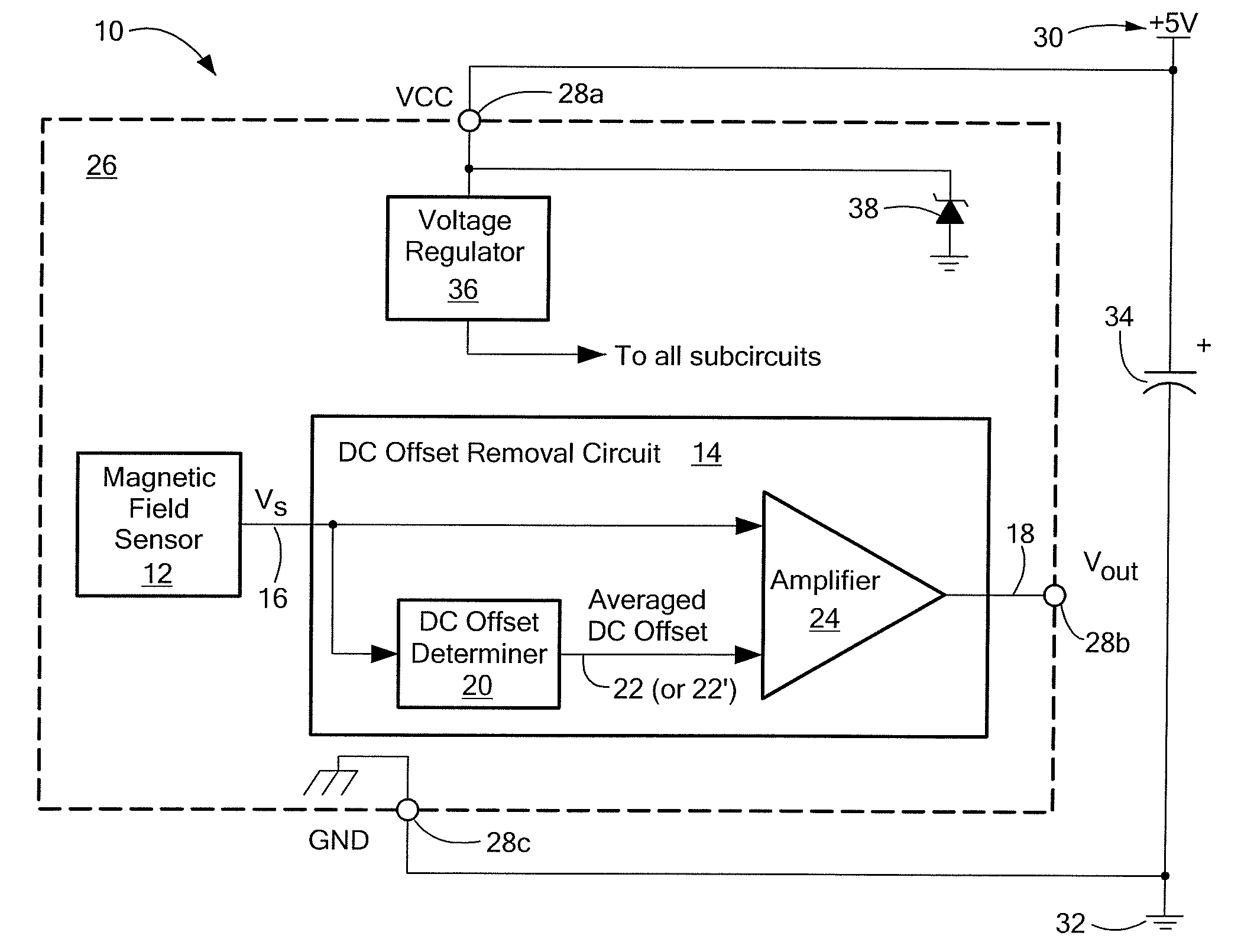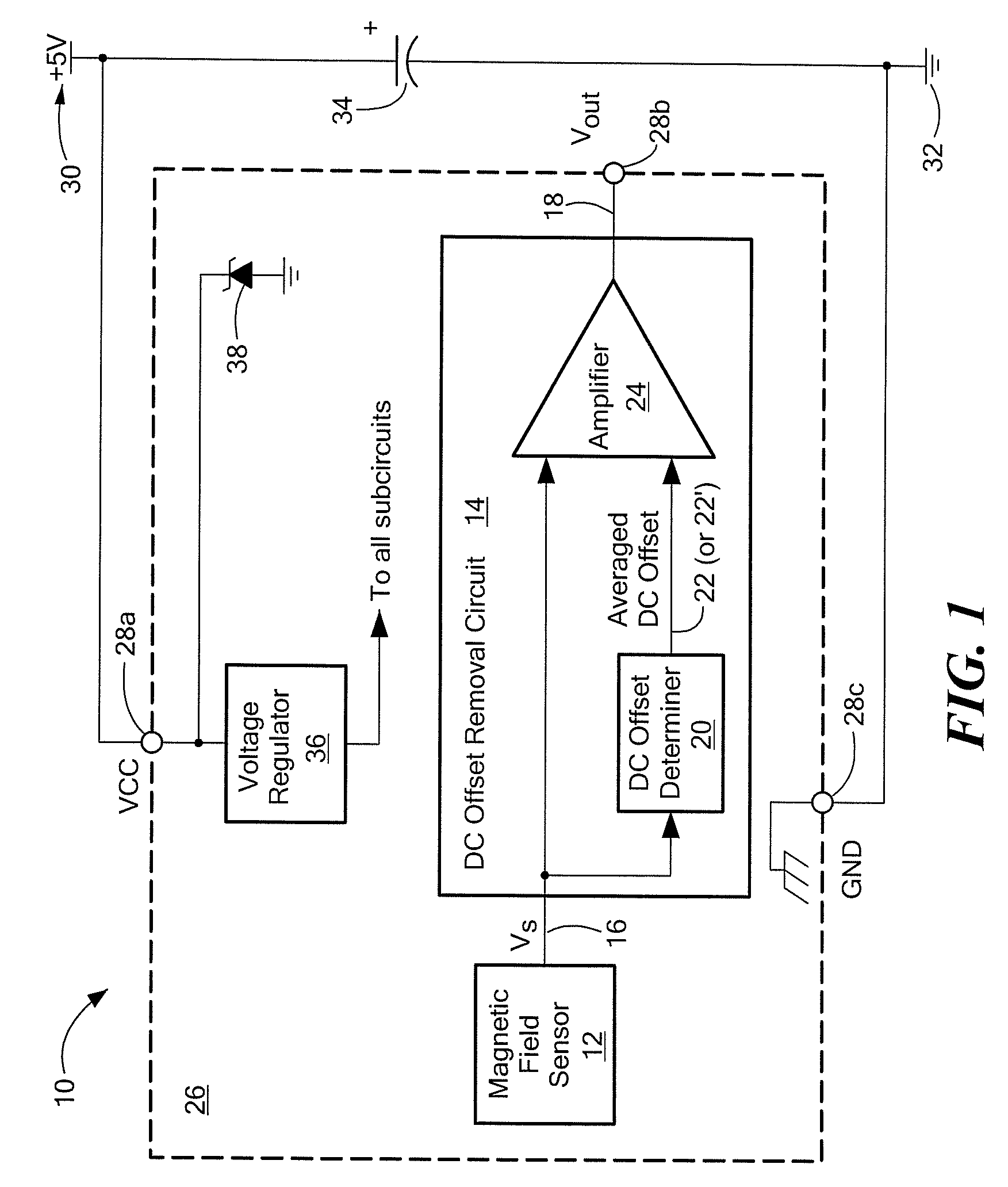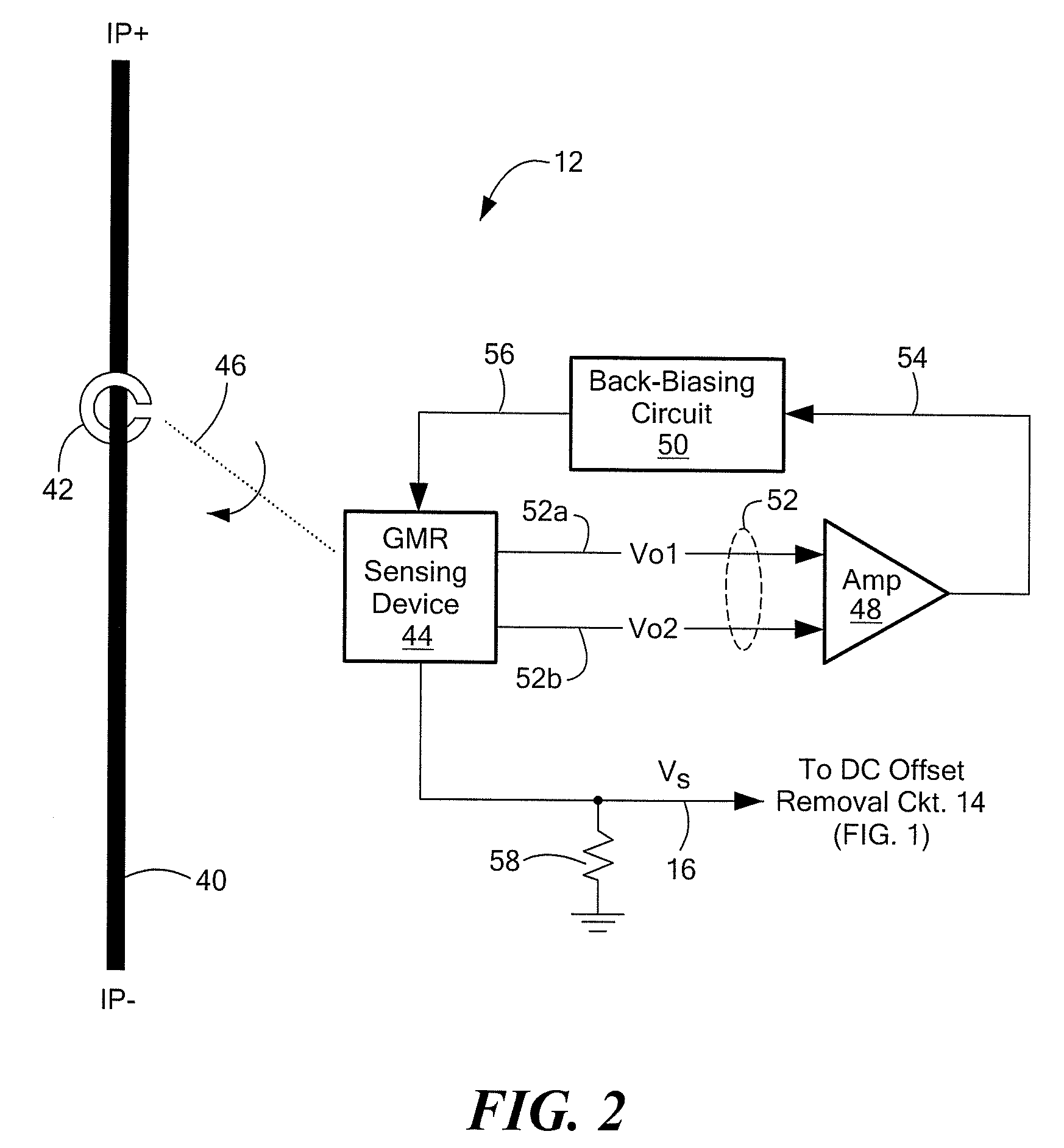Hysteresis offset cancellation for magnetic sensors
a technology of magnetic sensors and offset cancellation, applied in the field of magnetic field sensors, can solve the problems of not being used for high-resolution sensor applications, and achieve the effect of hysteresis characteristics
- Summary
- Abstract
- Description
- Claims
- Application Information
AI Technical Summary
Benefits of technology
Problems solved by technology
Method used
Image
Examples
Embodiment Construction
[0020]Referring to FIG. 1, a sensor 10 that includes a magnetic field sensor 12 coupled to a DC offset removal circuit 14 is shown. The magnetic field sensor 12 converts a sensed magnetic field into an AC signal voltage, shown as a sensed voltage Vs 16, that is proportional to the sensed magnetic field. The DC offset removal circuit 14 receives as input the voltage Vs 16 measured by the magnetic sensor 12 and provides at the sensor output an AC signal voltage (shown as output voltage Vout 18) that has been adjusted for DC offset. The DC offset removal circuit 14 serves to remove DC offset associated with sensing the magnetic field, in particular, DC offset related hysteresis characteristics of the magnetic field sensor 12. For example, and as will be described more fully below, when the magnetic field sensor 12 employs some type of magnetoresistive (MR) sensing device, the DC offset is a hysteresis-induced DC offset.
[0021]An ideal sensor operation is one in which the measured AC sig...
PUM
 Login to View More
Login to View More Abstract
Description
Claims
Application Information
 Login to View More
Login to View More - R&D
- Intellectual Property
- Life Sciences
- Materials
- Tech Scout
- Unparalleled Data Quality
- Higher Quality Content
- 60% Fewer Hallucinations
Browse by: Latest US Patents, China's latest patents, Technical Efficacy Thesaurus, Application Domain, Technology Topic, Popular Technical Reports.
© 2025 PatSnap. All rights reserved.Legal|Privacy policy|Modern Slavery Act Transparency Statement|Sitemap|About US| Contact US: help@patsnap.com



